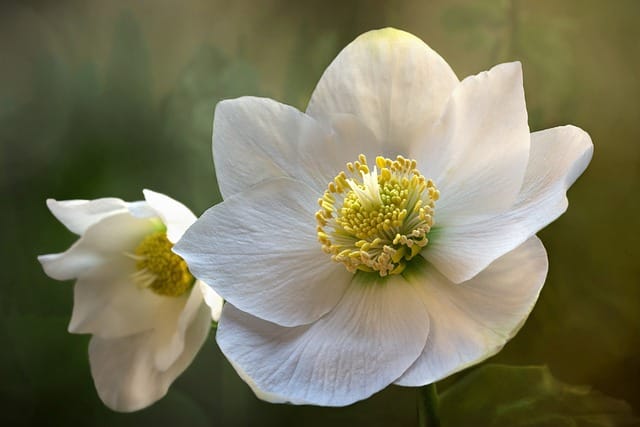How to grow Hellebores
Hellebores, also known as Lenten Roses, are beautiful perennial flowers that bloom in late winter or early spring

In this article:
- Introduction to Hellebores
- Choosing the Right Variety
- Selecting the Ideal Location
- Preparing the Soil
- Planting Hellebores
- Watering and Fertilizing Tips
- Mulching and Weed Control
- Pruning and Deadheading Techniques
- Dealing with Pest and Disease Issues
- Propagation Methods
- Overwintering Hellebores
- Enjoying the Beauty of Hellebores
- Frequently Asked Questions
- Conclusion
Introduction to Hellebores
Hellebores, also known as Lenten Roses, are beautiful perennial flowers that bloom in late winter or early spring. They are known for their elegant and long-lasting flowers that come in a variety of colors, including white, pink, purple, and green. Hellebores are low-maintenance plants and can thrive in different climates, making them a popular choice for gardeners.
Choosing the Right Variety
When selecting Hellebores, consider the color, size, and growth habits of the different varieties available. Common types include Helleborus orientalis, Helleborus foetidus, and Helleborus niger. Choose a variety that suits your garden's aesthetic and climate conditions.
Selecting the Ideal Location
Hellebores prefer a partially shaded location with well-draining soil. Avoid areas with strong winds or extreme heat. The ideal spot should provide protection from harsh weather conditions while still allowing some sunlight to reach the plants.
Preparing the Soil
Hellebores thrive in fertile soil with a pH level of around 6.0 to 7.0. Prepare the soil by removing any weeds and adding organic matter, such as compost or well-rotted manure. This will improve drainage and provide essential nutrients for the plants.
Planting Hellebores
Dig a hole slightly larger and deeper than the root ball of the Hellebore plant. Place the plant in the hole and backfill with soil, firming it gently around the roots. Make sure not to bury the crown of the plant, as it may rot if covered with soil.
Watering and Fertilizing Tips
Water Hellebores regularly during the growing season, ensuring that the soil stays evenly moist but not waterlogged. Apply a balanced fertilizer in early spring and again in late summer to promote healthy growth and vibrant blooms.
Mulching and Weed Control
Apply a layer of organic mulch, such as shredded bark or leaves, around the base of the Hellebores. This will help retain moisture, suppress weeds, and insulate the roots during extreme temperatures. Regularly check for weeds and remove them promptly to prevent competition for nutrients.
Pruning and Deadheading Techniques
Remove any damaged or yellowing leaves from the Hellebores throughout the growing season. Deadhead the spent flowers to encourage continuous blooming and prevent self-seeding. Be careful not to cut off any emerging flower buds.
Dealing with Pest and Disease Issues
Hellebores are generally pest and disease resistant, but they can occasionally be affected by aphids, slugs, or black spot disease. Use organic pest control methods, such as handpicking or spraying with an insecticidal soap solution. Proper garden hygiene and regular plant inspection can help prevent these issues.
Propagation Methods
Hellebores can be propagated through division or by collecting and sowing seeds. Divide the plants in early spring or after they finish flowering, ensuring that each division has at least one healthy bud and a portion of the root system. Sow seeds in containers during summer and provide them with a period of cold stratification before germination.
Overwintering Hellebores
Hellebores are hardy plants that can withstand cold temperatures. However, in areas with harsh winters, it is advisable to cover the plants with a layer of mulch or straw in late fall to protect them from frost. Remove the covering in early spring to allow new growth.
Enjoying the Beauty of Hellebores
Hellebores are perfect for adding color and interest to shady areas of your garden. Their graceful blooms can be cut and used in floral arrangements to bring beauty indoors. Create a stunning Hellebore display by combining different varieties and colors in your garden beds or containers.
Frequently Asked Questions
Q: How long do Hellebores bloom?
A: Hellebores can bloom for several months, from late winter to early summer, depending on the variety.
Q: Can Hellebores tolerate dry conditions?
A: While Hellebores prefer moist soil, they can tolerate short periods of dryness. However, consistent watering is recommended for optimal growth and flowering.
Q: Are Hellebores poisonous?
A: Hellebores contain toxins and can be poisonous if ingested. Keep them away from children and pets and wear gloves when handling the plants.
Conclusion
By following the guidelines outlined in this article, you can successfully cultivate and enjoy the beauty of Hellebores in your garden. With their stunning blooms and ability to thrive in various conditions, Hellebores are sure to add a touch of elegance to any landscape.
